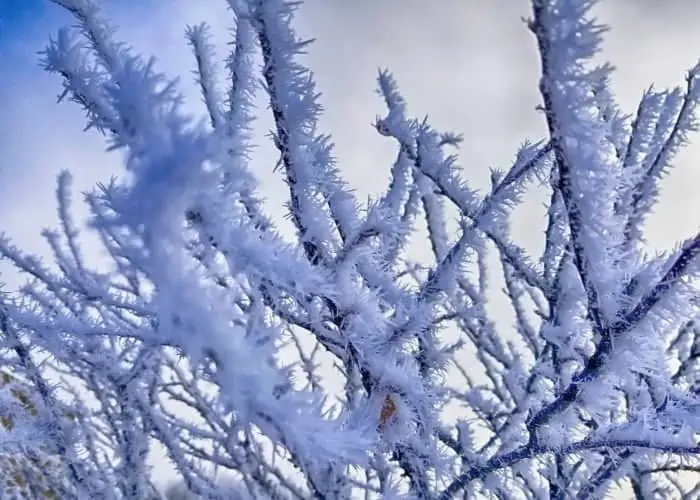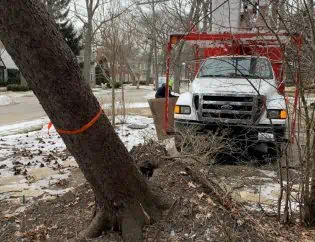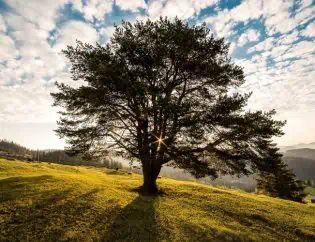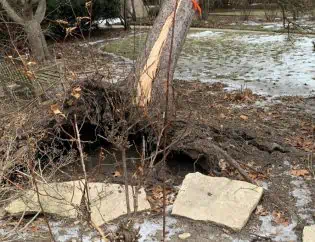
The ice, wind, snow, and freezing temperatures that mark winter are not just uncomfortable to human beings but could also prove quite detrimental to trees. And while you could make arrangements to winterize your home and take care of most of your possessions, you might not realize that your trees could also do with some attention during the cold season.
Quite unfortunately, sometimes there isn’t much you can do to keep your trees safe from the excess cold experienced in winter. Below, we shed light on the dangers that winter poses to trees and some actions that you could take to protect them.
Winter Tree Damage Inspection
How cold Temperature Contributes To Tree Damage
People who are skeptical about the possibility of severe coldness causing tree damage usually point to the fact that trees and other plants are generally dormant during this period. Unlike some plant species which can even hibernate during winter, trees are fully exposed and bear the full brunt of the weather conditions. And in such cases, the real effects of winter on tree life are only exhibited during spring.
The most significant cause of damage to trees during winter is extreme temperature fluctuation. What this means is that while a tree could withstand extreme cold, it is exposed to danger when the weather fluctuates between freezing and warmer weather in a short period of time.
If, for instance, you had a sunny day during which the temperature rose substantially, the dormant cells in a tree are awakened, and the bark of the tree expands. Should the temperatures freeze suddenly, the bark is forced to contract faster than normal. The result is damage in the tree cells, and this is evidenced by the bark becoming rough or darkening.
Frostbite
Frostbite on a tree occurs during periods of extreme weather fluctuations and is manifested through cracks on the bark of the tree. The sunny conditions that make the cells of a tree to expand allow warmth to penetrate the inner layers of a tree. When freezing conditions quickly follow, what happens is that the bark contracts urgently while the inner layer is still relatively warm. The inability of the two layers to contract uniformly usually puts pressure on the bark, and this results in the formation of cracks on the wood.
Risk of Damage to Un-Pruned Trees
As part of winter preparation for trees, it is usually recommended that the trees are pruned when they become dormant. If you live in a region that receives lots of ice and snow, trees that are covered by lots of branches provide an ideal landing place for these elements. The tree limbs could therefore be forced to carry more weight than they can handle, and this will make them snap or get bent.
Should heavy ice find its way onto the branches of a tree that is already bent, it is possible to exaggerate the bend and even to bring the tree down.
With such considerations in mind, it might be tempting for a property owner to try and remove the ice. However, it is recommended that you allow the ice to melt naturally as other forms of removal might cause more damage to the tree. When the weather improves, consider seeking the opinion of an arborist on the actual health of your tree as it is possible that a bend could have damaged the tree’s root structure.
Rodent Invasions during winter
Winter tree damage can also be brought about by rodent attacks. While some animal species hibernate during winter, rodents are still quite active, but unfortunately, for them, their sources of food supply reduce drastically during this season. The rodents are therefore forced to feed on some of the trees.
In most cases, it might not be possible for you to handle this problem on your own. Rodents are quite evasive, considering that they live underground and only come out when they want to feed. Therefore, the best way to deal with rodents damaging your trees is by allowing a professional arborist to inspect and provide a solution.
Getting a solution
If you live in cold areas, your trees are inevitably going to be exposed to the cold every winter season. Therefore, the best way to ensure that your trees are safe during such periods is by planting the right kind of trees.
And what trees would be perfect for cold regions?
Plant some native trees. It is important to note that native trees can survive in any weather of a give region. They can adapt to the condition of your area and will not require any special attention during winter. If you are not sure of the best native trees to grow, you can always consult a professional arborist for assistance.


